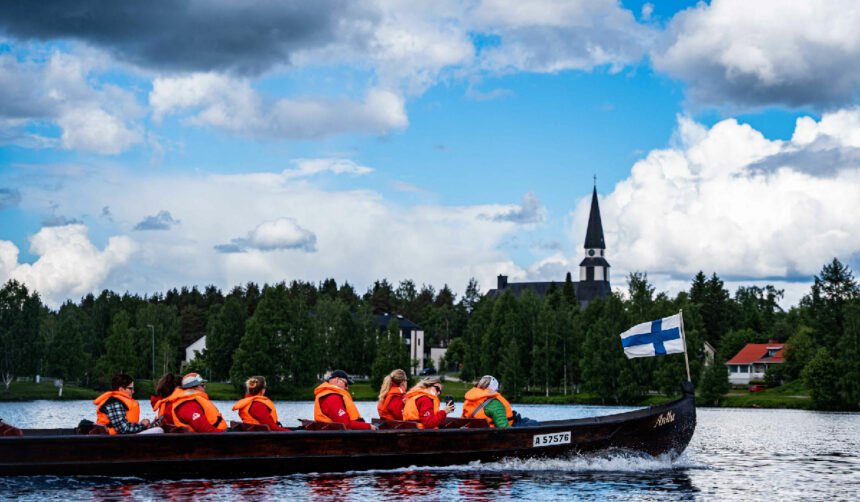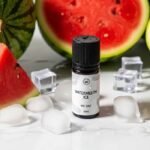Introduction
Veneajelu, a Finnish term formed from vene (boat) and ajelu (ride), describes far more than just a simple boat trip—it is a cultural and emotional experience deeply woven into the fabric of Finnish life. While its literal translation means “boat ride,” in Finland, veneajelu embodies the peaceful pleasure of gliding across still lakes, navigating scenic river routes, or exploring the intricate maze of coastal archipelagos.
Picture drifting along a mirror-like lake at sunset, the air crisp and clean, pine forests framing the horizon, and the gentle ripple of water as your boat moves effortlessly forward. For Finns, veneajelu is not just about the destination; it is about embracing the journey, the calmness of nature, and the slow rhythm of life on the water.
This article will explore the history, cultural roots, iconic destinations, different types of trips, safety essentials, sustainability practices, and practical tips so you can truly understand and appreciate the significance of veneajelu.
What is Veneajelu?
While veneajelu can be translated simply as “boat ride,” the meaning in Finnish culture extends far beyond a functional trip from one shore to another. Unlike transportation boating, which focuses on efficiency and purpose, veneajelu is taken purely for leisure, enjoyment, and connection with nature. It is an experience designed to slow you down and let you savor the sights, sounds, and smells of Finland’s water-rich environment. Veneajelu fits perfectly into the country’s seasonal rhythm, with long summer evenings offering endless daylight for scenic journeys, and autumn presenting vibrant landscapes reflected in calm waters.
The experience can vary widely, from rowing a small wooden boat on a quiet lake to sailing in the open waters of the Baltic or joining a guided cultural cruise through the archipelago. Whether done in a humble rowboat, a modern motorboat, a sleek yacht, or as part of an organized tour, veneajelu always maintains its central purpose—relaxation, enjoyment, and appreciation of Finland’s natural beauty.
Historical Roots of Veneajelu
The origins of veneajelu are rooted in Finland’s long-standing relationship with its waterways. For centuries, boats were essential for fishing, transporting goods, and connecting isolated communities. In the early days, simple wooden rowboats and dugout canoes carved from logs were the backbone of daily life, designed with durability to withstand Finland’s varying weather conditions. As transportation infrastructure improved in the late 19th and early 20th centuries, boats gradually shifted from being purely practical tools to becoming vehicles for recreation.
Leisure boating became associated with summer villas owned by city dwellers, where families would escape to the countryside for fresh air, fishing, and relaxed days on the water. Over time, the design of boats evolved from utilitarian to aesthetic, with comfort and style playing an increasingly important role. By the mid-20th century, the introduction of motorboats made veneajelu more accessible to the general public, allowing even those without strong rowing skills to enjoy extended trips on lakes and coastal waters.
Cultural and Natural Significance
Veneajelu holds a special place in Finnish culture because it perfectly mirrors the nation’s relationship with nature and water. With over 188,000 lakes, a vast network of rivers, and one of the world’s longest coastlines, Finland is shaped—both physically and culturally—by its aquatic environment. Veneajelu connects people to traditions like mökki (summer cottage) life, where evening boat rides after a sauna are a cherished ritual.
It fosters family bonds as grandparents teach grandchildren to row or steer, and it provides a shared space for friends to talk, laugh, and enjoy the fresh air. The practice also reflects deeply rooted Finnish values such as simplicity, closeness to nature, and sisu—a quiet determination to keep moving forward, whether rowing steadily across a lake or navigating an unexpected change in the weather. In literature, art, and film, veneajelu often symbolizes peace, nostalgia, and an unbreakable connection to the Finnish landscape.
Why Veneajelu is Popular Today
Modern veneajelu thrives for two main reasons: accessibility and variety. Many Finnish towns and cities are built near lakes, rivers, or the sea, meaning residents and visitors can reach the water within minutes. This convenience makes spontaneous boat trips possible, from short evening rides to full-day adventures. Veneajelu offers remarkable variety—some prefer peaceful, meditative journeys in small boats, while others choose active experiences like fishing trips, island hopping, or sailing races.
Seasonal changes add to its charm; in summer, long daylight hours create opportunities for late-night cruises under the midnight sun, while autumn wraps the shorelines in golden leaves reflected on calm waters. In recent years, veneajelu has been embraced by the tourism industry, with guided tours offering cultural commentary, eco-friendly electric boats preserving natural habitats, and themed experiences like culinary cruises or wildlife watching trips.
Types of Veneajelu Experiences
Veneajelu comes in many forms, each offering a unique way to enjoy Finland’s waterways. Leisure Cruises are ideal for relaxed sightseeing, often including refreshments and live commentary about local history. Wildlife and Nature Tours focus on spotting seals, seabirds, and unique plant life, with guides explaining the ecosystems of lakes and coastal areas. Fishing Trips combine travel with hands-on activities, giving participants the chance to catch local fish such as pike, perch, or zander. Sunset and Evening Rides are perfect for photographers and romantics, showcasing golden skies and calm waters in the long summer evenings.
Cultural and Historical Cruises explore maritime heritage through visits to fortress islands, lighthouses, and old harbors. For those seeking adventure, Sport Boating activities like sailing, water skiing, and kayaking offer excitement on the water. Finally, Houseboat Journeys provide multi-day living experiences on large lakes or canals, combining travel, leisure, and accommodation in one.
Iconic Veneajelu Destinations in Finland
One of the most famous areas for veneajelu is the Helsinki Archipelago, with over 330 islands accessible by boat. Highlights include the UNESCO-listed Suomenlinna Fortress, the historic icebreaker ships, and tranquil evening canal cruises. Lake Saimaa, Finland’s largest lake, is a paradise for nature lovers and home to the rare Saimaa ringed seal, with routes departing from towns like Savonlinna and Puumala.
Kolovesi National Park offers a motorboat-free environment ideal for peaceful exploration by paddle or electric boat, featuring ancient rock paintings and rich birdlife. The Archipelago Sea and Åland Islands in southwest Finland present thousands of islands connected by ferries and sailing routes, with unique maritime traditions and striking red granite cliffs. Other notable lakes like Päijänne, Oulujärvi, and Inari in Lapland offer stunning settings, from sandy shores to remote wilderness, with opportunities to witness the midnight sun or northern lights.
Seasonal Timing & Traditions
The veneajelu season in Finland typically runs from May to September. May and June bring long daylight hours and quieter waters, perfect for early-season exploration. July and August are the warmest months, drawing both locals and tourists to the water, with bustling harbors and lively summer events. September offers peaceful post-season rides, with crisp air and vibrant autumn colors reflected in the water.
Special traditions add cultural depth, such as taking a veneajelu on Juhannus (midsummer) to celebrate the year’s longest day, often combined with sauna visits and island picnics. In late summer, boat trips to berry-picking or mushroom-foraging locations are common, blending recreation with seasonal food traditions.
Safety Essentials for Veneajelu
While veneajelu is often calm and relaxing, safety is essential. Every trip should have a designated boatmaster or skipper responsible for the route, safety checks, and passenger well-being. Finnish regulations require that a correctly fitting lifejacket or flotation device be available for every passenger, and children or non-swimmers should wear them at all times. Weather in Finland can change rapidly, so checking forecasts from the Finnish Meteorological Institute before departure is vital.
Boats should carry essential safety equipment such as a first aid kit, a bailer or pump, signaling devices, and communication tools like a mobile phone or VHF radio. Following speed limits, respecting navigation rules, and keeping a safe distance from wildlife and other vessels ensures that the experience remains both safe and enjoyable.
Sustainability and Environmental Care
Environmental responsibility is a central part of modern veneajelu. Eco-friendly practices, such as using electric or hybrid boats, help reduce emissions and noise pollution. Observing no-wake zones protects fragile shorelines from erosion, while responsible waste management—bringing all rubbish back to shore and avoiding single-use plastics—keeps waterways clean.
Wildlife should always be viewed from a respectful distance, and visitors must follow all rules in protected areas like seal habitats or national parks. These practices align with Finland’s principle of jokamiehenoikeudet (everyman’s rights), which grants public access to nature but requires careful stewardship in return.
How to Plan a Veneajelu
Planning a veneajelu begins with choosing the right boat type—whether a traditional rowboat for quiet waters, a motorboat for covering longer distances, a sailboat for sport and elegance, or a houseboat for multi-day exploration. Decide whether to navigate yourself or book a guided tour, depending on your skill level and interest in learning about the area’s culture and history. Booking can be done through marinas, online platforms, or directly with tour operators, with seasonal availability peaking in summer. Costs vary widely, from affordable daily rentals for small boats to premium yacht charters. Essential packing items include layered clothing, a windproof jacket, sunscreen, snacks, drinks, and a waterproof bag for valuables.
Combining Veneajelu with Other Activities
A veneajelu can easily be paired with other memorable activities. Fishing and swimming stops are popular in summer, while floating saunas offer a truly Finnish experience. Many people pack picnics to enjoy on uninhabited islands, combining exploration with outdoor dining. Birdwatching and photography are rewarding in areas with diverse wildlife, and in some regions, cultural festivals can be reached by boat, adding a festive dimension to the trip.
Modern Adaptations
Today, veneajelu has embraced modern technology without losing its traditional charm. Electric and hybrid boats are becoming more common, appealing to eco-conscious travelers. Themed cruises, such as photography tours, gourmet dining trips, and historical excursions, cater to specific interests. Mobile apps now assist with route planning, docking reservations, and live weather updates, making trips safer and more convenient while maintaining the timeless pleasure of being on the water.
Practical Overview Table
| Type of Ride | Best For | Duration | Ideal Season |
|---|---|---|---|
| Leisure Cruise | First-timers, families | 1–3 hrs | Summer |
| Wildlife Tour | Nature lovers | Half/full day | Summer–early autumn |
| Fishing Trip | Anglers | Half/full day | Summer |
| Sunset Ride | Photographers, couples | 1–2 hrs | Late summer |
| Houseboat Tour | Multi-day explorers | 2+ days | Summer |
Cultural Overview Table
| Element | Cultural Meaning |
|---|---|
| Juhannus Boat Ride | Celebrating midsummer & nature |
| Vintage Wooden Boat | Heritage preservation |
| Coffee Break on Board | Social bonding ritual (kahvitauko) |
| Island-Hopping | Connection to maritime tradition |
| Seal Watching | Respect for wildlife |
Conclusion
Veneajelu is both a reflection of Finland’s deep connection to its waterways and a timeless leisure activity that continues to evolve with modern trends. Whether you are quietly rowing at dawn, sailing between islands in the Archipelago Sea, or joining a guided wildlife tour on Lake Saimaa, each trip offers a unique blend of relaxation, culture, and natural beauty. It is more than just sightseeing—it is an opportunity to slow down, breathe fresh air, and experience Finland from its most natural vantage point: the water. For locals, veneajelu is a cherished tradition; for visitors, it can become the highlight of a trip. Embracing both tradition and innovation, veneajelu remains an enduring invitation to explore, connect, and find peace on the water.
FAQs About Veneajelu
1. What does “veneajelu” mean in Finland?
Veneajelu is a Finnish word that means “boat ride,” made from vene (boat) and ajelu (ride). In Finland, it refers to a relaxing trip on lakes, rivers, or coastal waters, done for enjoyment rather than transportation.
2. When is the best time for a veneajelu in Finland?
The best time for a veneajelu is from May to September. Summer offers long daylight hours and warm weather, while early autumn adds colorful scenery and peaceful waters.
3. Do I need a boating license for a veneajelu?
You do not need a boating license for public cruises or small rental boats under 15 meters with less than 20 horsepower. Larger vessels may require proof of boating skills or a license.
4. What should I wear for a veneajelu?
Dress in layers to adjust to changing weather. A windproof jacket, hat, sunglasses, and sunscreen are recommended. Comfortable shoes and a waterproof bag for valuables are also useful.
5. Is a lifejacket required during a veneajelu?
Yes, Finnish law requires a lifejacket or flotation device for every passenger. Children and non-swimmers should wear it at all times, and adults should wear it in rough conditions or open water.
You May Read Also: Mac Računala: Powerful & Reliable Computers You’ll Love
For More Information, Visit Dotmagazine









